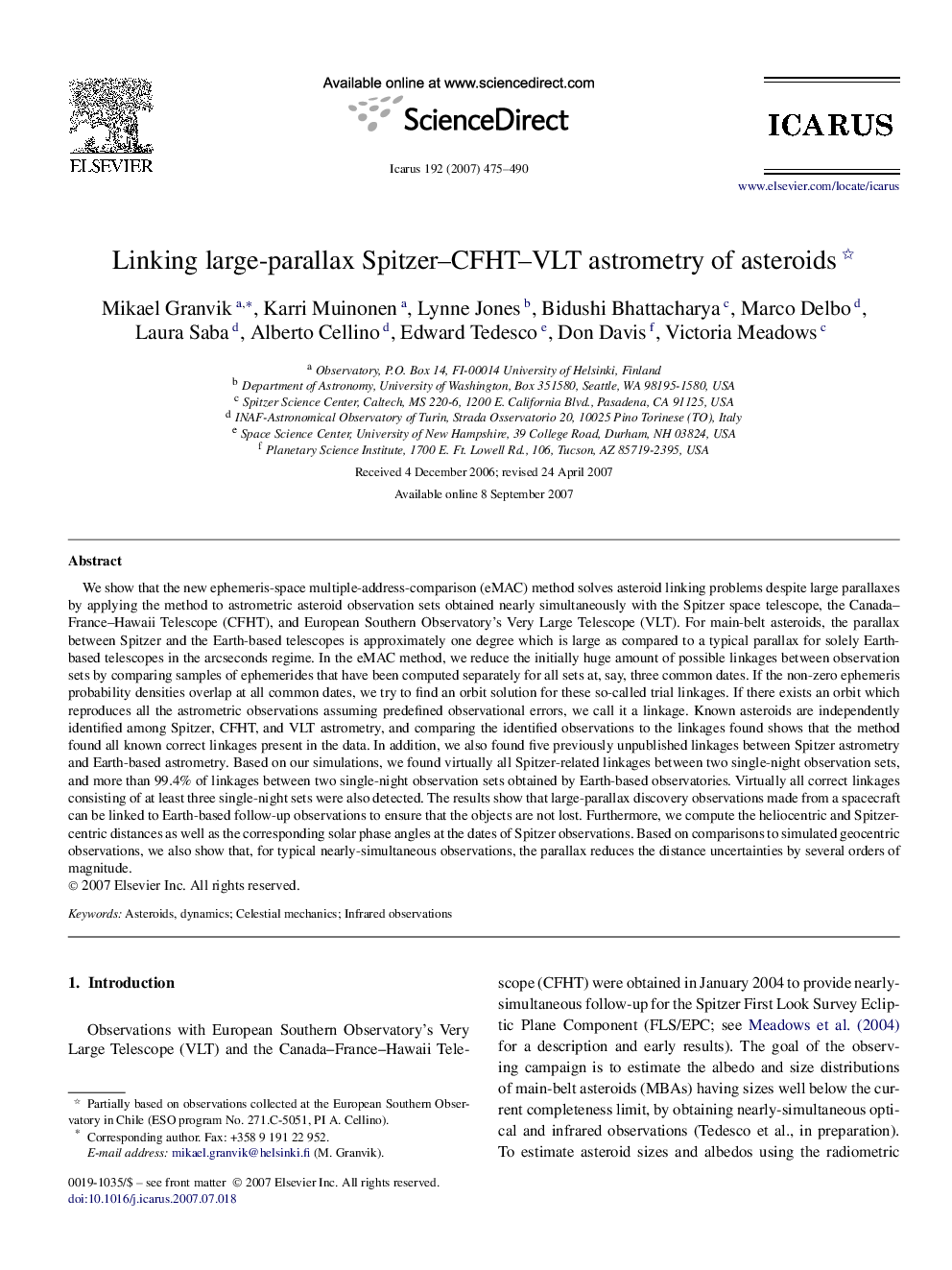| Article ID | Journal | Published Year | Pages | File Type |
|---|---|---|---|---|
| 1775919 | Icarus | 2007 | 16 Pages |
Abstract
We show that the new ephemeris-space multiple-address-comparison (eMAC) method solves asteroid linking problems despite large parallaxes by applying the method to astrometric asteroid observation sets obtained nearly simultaneously with the Spitzer space telescope, the Canada-France-Hawaii Telescope (CFHT), and European Southern Observatory's Very Large Telescope (VLT). For main-belt asteroids, the parallax between Spitzer and the Earth-based telescopes is approximately one degree which is large as compared to a typical parallax for solely Earth-based telescopes in the arcseconds regime. In the eMAC method, we reduce the initially huge amount of possible linkages between observation sets by comparing samples of ephemerides that have been computed separately for all sets at, say, three common dates. If the non-zero ephemeris probability densities overlap at all common dates, we try to find an orbit solution for these so-called trial linkages. If there exists an orbit which reproduces all the astrometric observations assuming predefined observational errors, we call it a linkage. Known asteroids are independently identified among Spitzer, CFHT, and VLT astrometry, and comparing the identified observations to the linkages found shows that the method found all known correct linkages present in the data. In addition, we also found five previously unpublished linkages between Spitzer astrometry and Earth-based astrometry. Based on our simulations, we found virtually all Spitzer-related linkages between two single-night observation sets, and more than 99.4% of linkages between two single-night observation sets obtained by Earth-based observatories. Virtually all correct linkages consisting of at least three single-night sets were also detected. The results show that large-parallax discovery observations made from a spacecraft can be linked to Earth-based follow-up observations to ensure that the objects are not lost. Furthermore, we compute the heliocentric and Spitzer-centric distances as well as the corresponding solar phase angles at the dates of Spitzer observations. Based on comparisons to simulated geocentric observations, we also show that, for typical nearly-simultaneous observations, the parallax reduces the distance uncertainties by several orders of magnitude.
Related Topics
Physical Sciences and Engineering
Earth and Planetary Sciences
Space and Planetary Science
Authors
Mikael Granvik, Karri Muinonen, Lynne Jones, Bidushi Bhattacharya, Marco Delbo, Laura Saba, Alberto Cellino, Edward Tedesco, Don Davis, Victoria Meadows,
